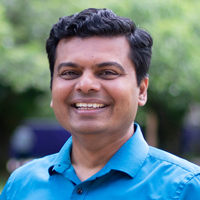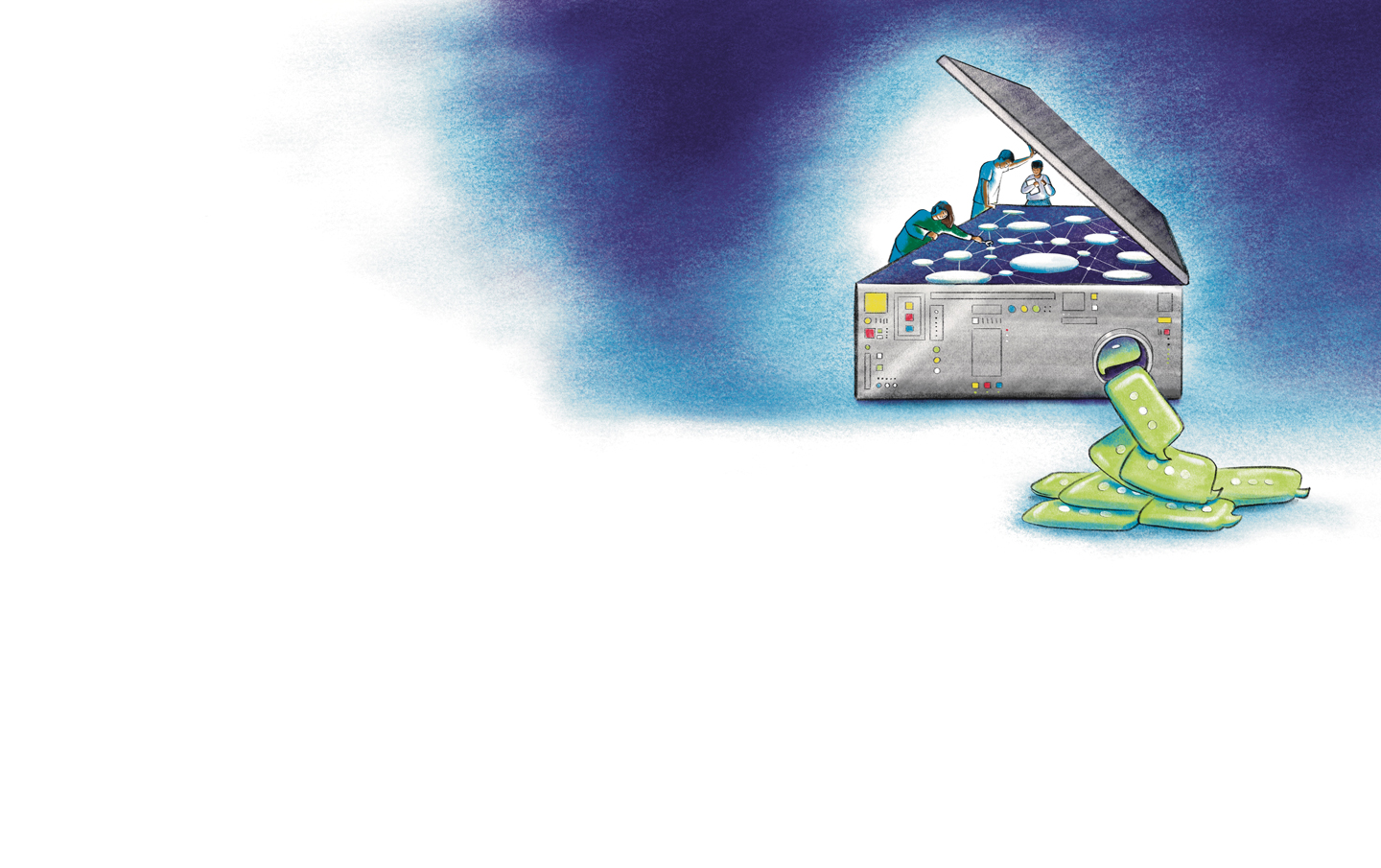For students such as Nikhil Navkal and Sai Ma, it was about learning a technology that would better their career prospects. But it was more than that. It was also about exploring a technology that they use in their daily lives.
The iSchool students took a special topics course last spring called Building and Applying Large Language Models, the Core of the Generative Artificial Intelligence Phenomenon.
“If I want to make sure that I continue to be relevant to where business is going, I need to learn about large language models and leverage their power,” said Navkal, who is pursuing a master’s degree in Information Management. “I need to deeply understand what it’s doing, the shortcomings of the technology, the strengths of the technology.
“What can we expect going forward with how this technology is going to evolve?”

Nearly 30 students in the class built small-scale versions of these large language models, often called LLMs. The course was taught by iSchool Professor Chirag Shah.
Ma had taken an earlier class from Shah in winter quarter — Introduction to Machine Learning — and enjoyed his approach to explaining extremely technical topics. She was eager to take another class from him, but also knew how important this technology would be for her career.
“The rise of generative AI will have a big impact on every product in the tech world,” said Ma, who is also pursuing a master’s in Information Management.
Large language models power generative AI. These are algorithms that predict text when given a sequence of words. LLMs are trained on what is called a corpus of text, a large amount of written material. The idea is if LLMs can predict text in a sequence of words, that the algorithm can build sentences and then paragraphs, which can lead to generative AI communicating with the user.
“You've heard enough English,” Shah said. “You've spoken enough English. You've written and read enough English, and if you've done that, you should be able to generate new text. You should be able to fill in the blanks. You should be able to converse.”
The class was held early Wednesday evenings online to fit into the schedule not just of full-time students, but also professionals who wanted to learn about LLMs. One of the challenges that Shah faced was putting together a lesson plan for a rapidly evolving technology.
“The train is already coming and I'm laying the tracks and I have to make sure that I’m just ahead enough,” Shah said. “The students also understood this. Of course, I was very honest with them.”
Fortunately, Shah has been studying generative artificial intelligence for years, long before OpenAI made a splash in November 2022 by launching its ChatGPT virtual assistant.
He likened his course to a television cooking show, because much of the behind-the-scenes work was prepared in advance for the students. In the class, Shah helped his students build what he called miniature ChatGPTs to get hands-on experience with the ways technology is built, modified and used.
“We don't want to be just looking at history happening,” Shah said. “We want to be part of that history and, to do that, we really need to build these things ourselves to understand what it takes, what it involves.”
The students in the class used LLMs to create chatbots for various projects such as one that could synthesize movie reviews and propose movies for a viewer to watch and another to answer health-care questions.
Shah plans to hold the class again in spring quarter 2025. It’s held later in the year so that students can take the prerequisites.
Navkal called the class one of the best he’s taken at the iSchool. He lives on the East Coast and takes classes online. He was part of the first cohort when the iSchool started offering the MSIM program online in 2021. The iSchool appealed to him because he had a daughter when he first started — he now has two children — and the classes start after their bedtimes.
He also works part-time for a uniform company that is transitioning from static website to a dynamic e-commerce platform. Navkal expects to graduate in 2025.
“ChatGPT can write code definitely, but it doesn’t have this capacity to think deeply and communicate that message effectively.”
Navkal found that, as a consumer, generative AI already helps him in multiple ways. He discovered he was dyslexic when he was 26. He combines emails, PDFs and Word and other documents so he can use generative AI to help navigate the information. When he recently registered his daughter for a music school, he put the long and detailed application into a chatbot to summarize it.
“I don’t need to do control F to find specific keywords. Instead, I can use this as a reference,” Navkal said. “I need to know, is that tool accurate or not? Like if I make a mistake, I can’t just blame this technology for it.”
He notes that AI is beginning to pop up everywhere. He points to Gmail and how Gemini, Google’s AI chatbot, is beginning to make summaries of emails. Microsoft also has Copilot and Meta has LLaMa.
For their project, Navkal and his teammates aimed to test the limits of generative AI. They wanted to determine if a chatbot based on a flawed language could still be useful. So, they took NFL broadcasts over several decades to train their chatbot.
Previous research found that the language in the broadcasts was racially biased, so the team knew the information had flaws. They wondered if these same broadcasts would generate comments with a gender bias.
While that was the case, the team also found that this could still be mitigated, meaning that even large language models created with flawed text can be salvaged.
For Ma, even before she took Shah’s class last spring, she noticed that both job and internship postings required experience in these areas. She said Shah’s class did well providing theoretical understandings of this technology while also giving the students a chance to work hands-on.
Her team created an AI chatbot that would help Apple users solve technical problems, a sort of interactive FAQ. They created a functioning minimally viable product, a chatbot that lacks the bells and whistles but still helps the user navigate through issues.
One of the course’s highlights for Ma was weekly discussions where students explored the topics of the day. Ma remembered when the talk veered into about how generative AI — and its ability to produce code — could impact their future job prospects.
“Consider that we’re all in this phase where we’re looking for jobs,” Ma said. “AI seems to be a threat for a lot of people; it’s something that creates a sense of excitement but also frustration and anxiety.”
Ma said that Shah didn’t shy away from the question. He agreed that it was a challenge, but also an opportunity. Students who understand what generative AI can — and cannot — do will be set up to succeed.
“ChatGPT can write code definitely, but it doesn’t have this capacity to think deeply and communicate that message effectively,” Ma said. “It’s a must-do to learn how to code, but it’s not something that will make you successful. Other skills and qualities stand out in the current generative AI-empowered world.”
